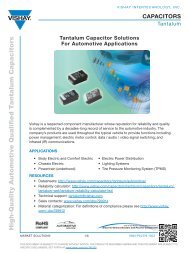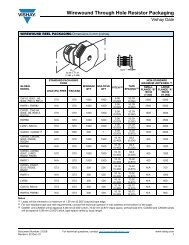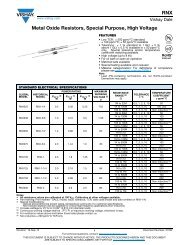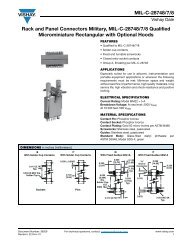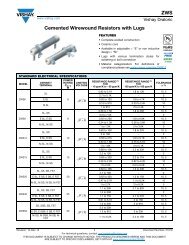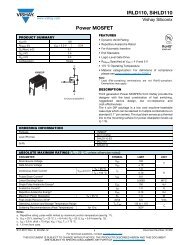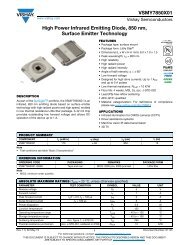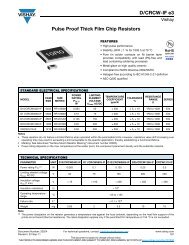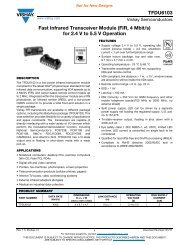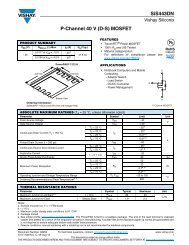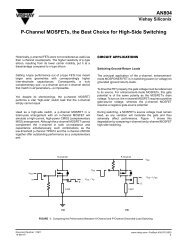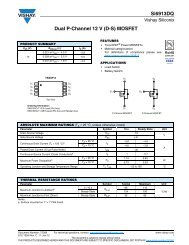PhotoTriac FAQs - Vishay
PhotoTriac FAQs - Vishay
PhotoTriac FAQs - Vishay
- No tags were found...
You also want an ePaper? Increase the reach of your titles
YUMPU automatically turns print PDFs into web optimized ePapers that Google loves.
Application Note<strong>Vishay</strong> SemiconductorsExample:-- IL410 (ZC Phototriac) --I FT : 1 mA (V D = 5 VDC)Test condition: V T = 120.7 V, 60 HzResistive Load: 29.4 W, 0.242 Arms, PF = 1.00, I FT = 1.5 mAInductive Load (AC Relay): 9.4 W, 0.241 Arms, PF = 0.33, I FT = 2.2 mA-- IL420 (NZC Phototriac) --I FT : 0.9 mA (V D = 5 VDC)Test condition: V T = 120.7 V, 60 HzResistive Load: 28.4 W, 0.237 Arms, PF = 1.00, I FT = 1.0 mAInductive Load (AC Relay): 9.0 W, 0.237 Arms, PF = 0.33, I FT = 1.1 mARemarks: The I FT of a ZC phototriac is dependent on the terminal voltage and the power factor, but NZC isnot.6. What is "inhibit voltage"?QuestionThere is a parameter "inhibit voltage" in the Electrical Characteristics table of Zero-crossing phototriacdatasheet. What does it mean?Answer:The ZC triac has an inhibit circuit (or called ZC Circuit) to inhibit the triac from being triggered on whenthe main power supply voltage (V T ) is not close to zero even if the trigger current (I F ) is high.mcai Page 5 11/10/2008



